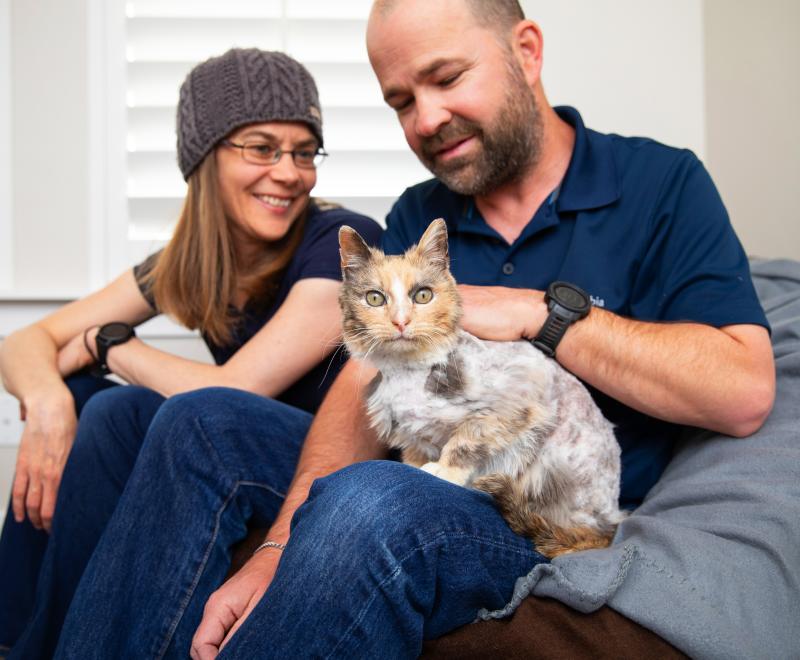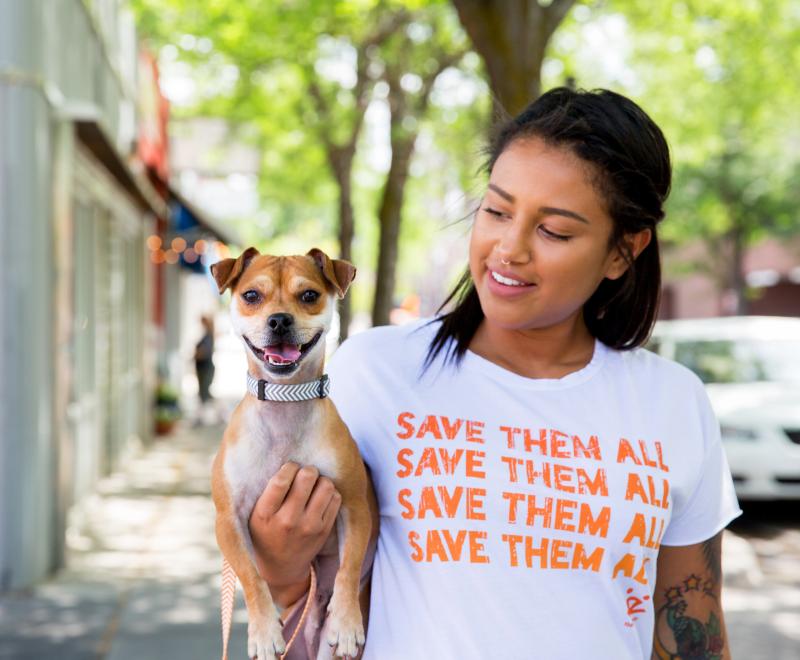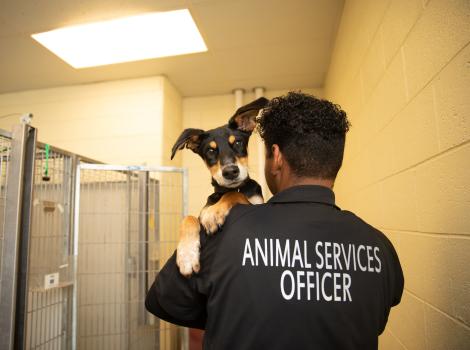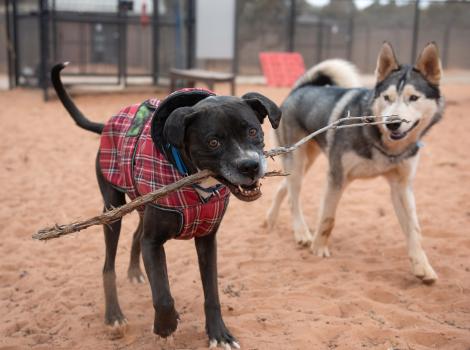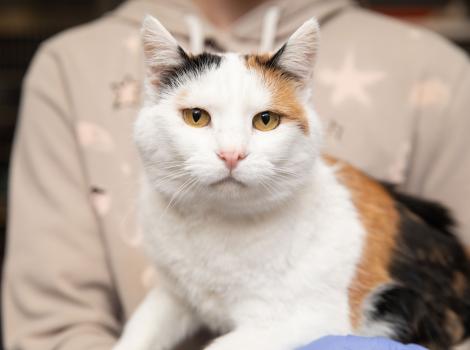Uniting to rescue pets after Texas floods

When floodwaters surged through Texas Hill Country over the Fourth of July weekend, everything there changed in an instant, for people and their pets.
Ten-week-old Honey, a tiny kitten with ice-blue eyes and a big meow, had no idea he was about to leave the shelter and board a plane bound for safety. But a few days after the rain stopped, he arrived at Best Friends Animal Sanctuary, riding in style aboard a Wings of Rescue flight.
As his kennel was carried off the plane, Honey let out a full-body meow that seemed to say, “Excuse me, sir, I have arrived.”
He had — and so had 67 other adoptable pets who had been in Texas shelters before the floods hit. The goal of that flight was simple: make space for flood-displaced pets to stay close to home, where they have the best chance of being reunited with their families.
Swift action, ongoing support
Best Friends’ emergency response team began working with longtime partner Austin Pets Alive! (APA) within hours of the flooding. APA quickly deployed to Kerr County, one of the hardest-hit areas, where the local shelter was overwhelmed and had suffered a tragic loss of animals’ lives. Best Friends began mobilizing funding, logistical support, and resources to help move adoptable pets out and open space for search, rescue, and reunification efforts.
To ease the pressure on overcrowded Texas shelters, Best Friends coordinated and funded that emergency flight in partnership with Wings of Rescue and Austin Pets Alive! It carried 127 cats and dogs who had been in shelters and available for adoption prior to the floods out of the disaster zone — 59 went to shelter partners in the Fort Worth area, and 68 animals continued on to the Sanctuary.
[An unexpected reprieve in shelters after the L.A. wildfires]
Since then, via funding more emergency flights, Best Friends has helped move hundreds of adoptable animals out of affected areas. And more are taking off soon.
“Every animal we can get out of Texas right now means one more kennel for a flood-displaced pet to stay longer and have a better chance of being reunited with their family,” says Bethany Heins, Best Friends program director. “That’s the single most important thing we’re doing right now.”
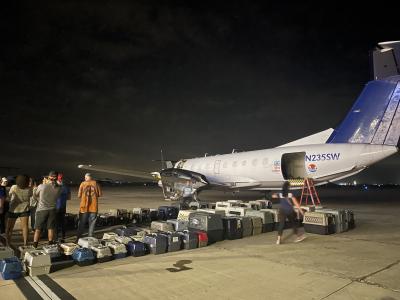
Collaboration and compassion
In addition to moving animals out of the area, Best Friends is supporting organizations with funding and logistical assistance. “Some shelters, like San Angelo, were already operating at nearly double capacity before this even happened,” says Sophia Proler, Best Friends’ south central region director. “Others couldn’t access basic medical care because the roads were unsafe. Even the vets couldn’t get there. We flew a veterinarian in to help until the local vets can safely return.”
Best Friends Network Partners are receiving stipends to offset their costs of taking in pets from the region, and staff are coordinating logistics and supplies.
[Pets flown from hurricane-damaged Florida get new start]
And for families who lost their homes but not their pets, a nearby boarding facility has opened its doors, offering temporary care for their animals while their people get back on their feet. Best Friends is helping to fund those stays to help keep families together.
“The need exists both inside and outside the shelters,” says Sophia. “And there are a lot of things to be sad about, but a lot of things to be grateful for, too.”

Safe and looking forward
Back at the Sanctuary, Honey the blue-eyed kitten isn’t alone.
Among the dogs and cats who traveled via plane with him to Utah were Homestar Runner and Trogdor, floppy-eared puppies who bounded out of their crate like they were late for recess. The 4-month-old littermates have two speeds: turbo and nap.
Also on board were Sugar, a silky-soft young mama cat, and her kitten Holly, who’s part snuggle bug, part chaos goblin. One minute she’s climbing into her mom’s side, the next she’s launching herself at a toy with wide-eyed abandon.
They are the lucky ones, as are all the animals whom people in Texas and across the country have come together to care for in the face of a terrible disaster.
“This has really affected a lot of people,” says Sophia. “I think people are really glad there’s something they can do, even if it’s just a small thing.”
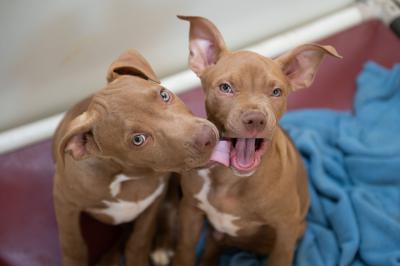
Let's make every shelter and every community no-kill
Our goal at Best Friends is to support all animal shelters in the U.S. in reaching no-kill. No-kill means saving every dog and cat in a shelter who can be saved, accounting for community safety and good quality of life for pets.
Shelter staff can’t do it alone. Saving animals in shelters is everyone’s responsibility, and it takes support and participation from the community. No-kill is possible when we work together thoughtfully, honestly, and collaboratively.


